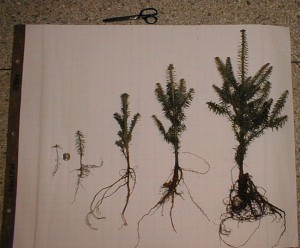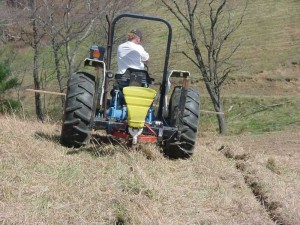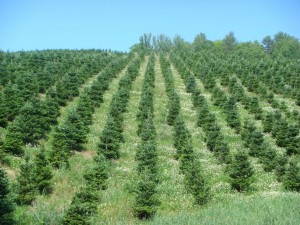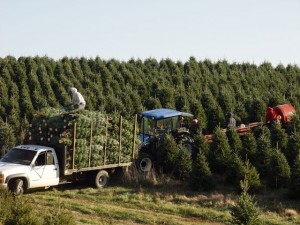A Christmas Tree’s Long Journey Home
go.ncsu.edu/readext?295832
en Español / em Português
El inglés es el idioma de control de esta página. En la medida en que haya algún conflicto entre la traducción al inglés y la traducción, el inglés prevalece.
Al hacer clic en el enlace de traducción se activa un servicio de traducción gratuito para convertir la página al español. Al igual que con cualquier traducción por Internet, la conversión no es sensible al contexto y puede que no traduzca el texto en su significado original. NC State Extension no garantiza la exactitud del texto traducido. Por favor, tenga en cuenta que algunas aplicaciones y/o servicios pueden no funcionar como se espera cuando se traducen.
Português
Inglês é o idioma de controle desta página. Na medida que haja algum conflito entre o texto original em Inglês e a tradução, o Inglês prevalece.
Ao clicar no link de tradução, um serviço gratuito de tradução será ativado para converter a página para o Português. Como em qualquer tradução pela internet, a conversão não é sensivel ao contexto e pode não ocorrer a tradução para o significado orginal. O serviço de Extensão da Carolina do Norte (NC State Extension) não garante a exatidão do texto traduzido. Por favor, observe que algumas funções ou serviços podem não funcionar como esperado após a tradução.
English
English is the controlling language of this page. To the extent there is any conflict between the English text and the translation, English controls.
Clicking on the translation link activates a free translation service to convert the page to Spanish. As with any Internet translation, the conversion is not context-sensitive and may not translate the text to its original meaning. NC State Extension does not guarantee the accuracy of the translated text. Please note that some applications and/or services may not function as expected when translated.
Collapse ▲While it might be enough to enjoy the full shape, soft texture, and woodsy aroma of your cut Fraser fir Christmas tree this Holiday season, comprehending the journey it made could make you appreciate it even more. There was a lot of time and effort that went into the making of your perfect Christmas tree. The tree displayed in your home is the culmination of more than 14 years of planning and effort by a Christmas tree grower.
Journey Starts with Seed

One (far left) to five year (far right) old Fraser fir seedlings show how slowly firs grow.
The journey from seed to tree began in 2001 about the time George W. Bush became President. It started on one of the highest mountain tops in the Southern Appalachians with a crop of Fraser fir seed. Most Fraser fir seed at that time was collected from native stands on top of Roan Mountain, but seed could also have come from Mt. Rogers, VA or one of several seed orchards. Weather conditions favor the development of a good cone crop only once every 5 to 7 years so the seed for your tree might have been several years old when it was used.
Growers collect cones by the bushel in late August and early September. Usually a bushel of cones yields 2 or 3 pounds of seed with about 60,000 seed per pound. Workers climb to the top of 40-foot-tall Fraser fir trees to pull sticky cones off the branches. As cones are carefully dried, they shatter into bracts, seed, and stems. The seed is extracted and cleaned. When properly dried, seed can be frozen for many years. This allows growers to grow seedlings every year even though a good cone crop can be few and far between.
Fraser Fir is Slow Growing
Fraser fir only puts on one flush of growth each year. In an outdoor nursery bed, it can take five years to progress from seed to a one-foot-tall transplant that is large enough to survive in a Christmas tree field. In the first growing season, the tiny Fraser fir seedling only grows 1-inch tall. These days, most growers purchase greenhouse grown seedlings. Greenhouse growers carefully manage light, nutrients, and temperature to trick the tiny Fraser firs into growing the equivalent of three years in just one year. The 6-inch tall seedling is replanted in a new bed or larger container to grow two more flushes. Short cuts help but even three years is a long time to wait for a seedling!
Setting Fields

A grower is putting phosphorus in the soil before planting.
Most planting occurs in early spring after soils dry out enough to work. Preparation often began the previous summer. Growers might cut trees, mow weeds, apply lime and fertilizer, disk it in, and possibly sow a ground cover to prepare the site. On the steeper mountain sides, all work has to be done by hand. Transplants are often planted with a mechanical planter pulled by a four-wheel drive tractor, but the transplants still have to be heeled into place by hand and foot. Most growers set about 1600 trees to an acre.
If the land is properly prepared before planting, little additional care may be needed the first year in the field. As long as weeds are not too dense, many growers let them grow above the newly established trees to shade and protect them. The first year in the field can be an anxious time for the grower. Young trees can easily die from drought, deer browsing, beetle grub damage to their roots, or root disease. Even healthy transplants tend not to grow much the first year or two until roots become established.
Christmas Trees Don’t Grow By Themselves

A field of young Fraser fir with good clover ground cover growing around it.
Once trees are established and start to grow, a rhythm develops over the course of a season. Fields are soil sampled to determine their nutritional needs. Trees are fertilized and limed according to the soil analysis reports, usually by hand. Gaps in the fields where trees died are reset with new transplants. Ground covers and weeds are managed to give young trees a chance to grow. For instance, unmanaged grass will choke out and kill young trees. Growers regularly scout for pests to see what problems may be developing. In early summer, the trees are shaped. Initially, only the tops may need pruning, but as the tree gets older their sides are sheared with a long knife. Pruning and shearing is the point where a grower creates his or her own style of tree. Market trees are pruned differently from “keepers” and are tagged before trees are trimmed. On a Christmas tree farm, there is enough to do to keep working through spring, summer, and fall.
Harvesting Trees

A harvest crew cuts, bales, and transports trees to a storage facilty to ensure freshness.
As summer progresses into fall, focus shifts more to the market trees. Growers show buyers their trees. Additional fertilizers may be applied to improve tree color. Growers continue to scout their fields for pests. Growers also begin preparing tree storage areas for the upcoming harvest as well as checking all the harvest equipment. Everything must be planned, prepared, and ready for the onset of harvest in the beginning of November.
Harvest is the culmination of the previous 14 years of work and it all happens in 3 to 6 weeks. Trees are cut, carried from the field, baled by machine, and hauled to a storage area. Trees are sorted by size in the storage area. Storage areas keep trees cool and humidified while they wait for transportation. From the storage area, trees are lifted into trucks using an elevator. Most trees are handled 6 or 7 times between being cut and being loaded onto a tractor trailer. Some farms have mechanized harvest by putting trees onto pallets that can be moved by forklifts. Usually, no more than 600 to 800 trees fit on a full-size tractor trailer. Most farms load dozens of trucks but larger farms may load hundreds in the space of two to three weeks
Marketing Trees
Fraser fir Christmas trees may be transported just “off the mountain” or travel across the country. Most trees go directly to the retail lots where they will be sold, but some go first to re-wholesalers who redistribute them to their own customers. Trees may be handled several times on the retail lot as they are moved first into protected storage yards and then into display areas as needed. Many Fraser fir trees get their trunk handle trimmed on the retail lot where branches become wreaths or roping. The short trip in your car from the retail lot to your home is the last leg of a journey that took years to traverse.
So, as you put the next ornament onto that lustrous branch, take a moment to reflect on the level of planning and hard work that went into producing such a beautiful tree. It truly deserves to be the centerpiece of your Christmas holiday.
Written by Jeff Owen, updated January 28, 2015


